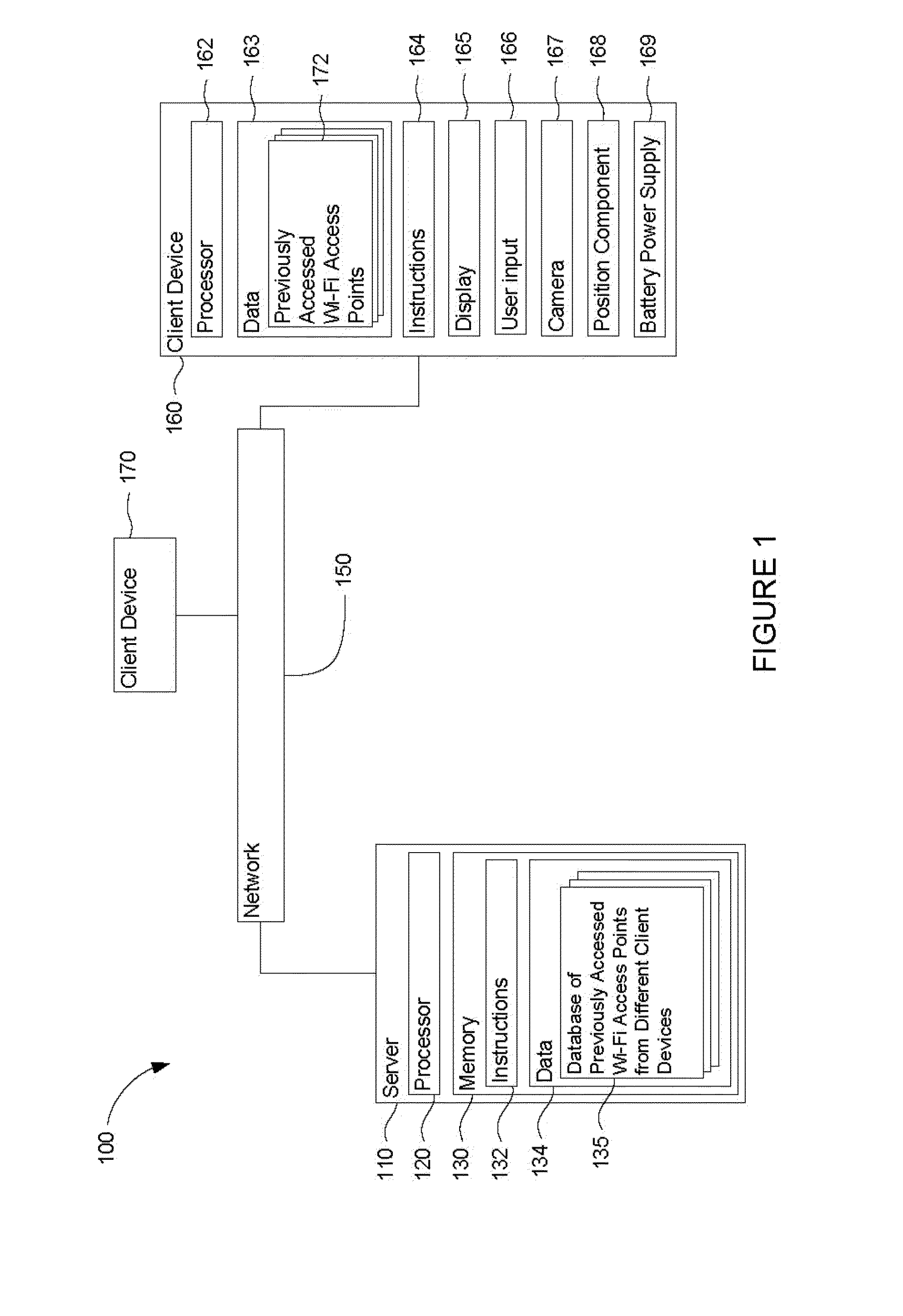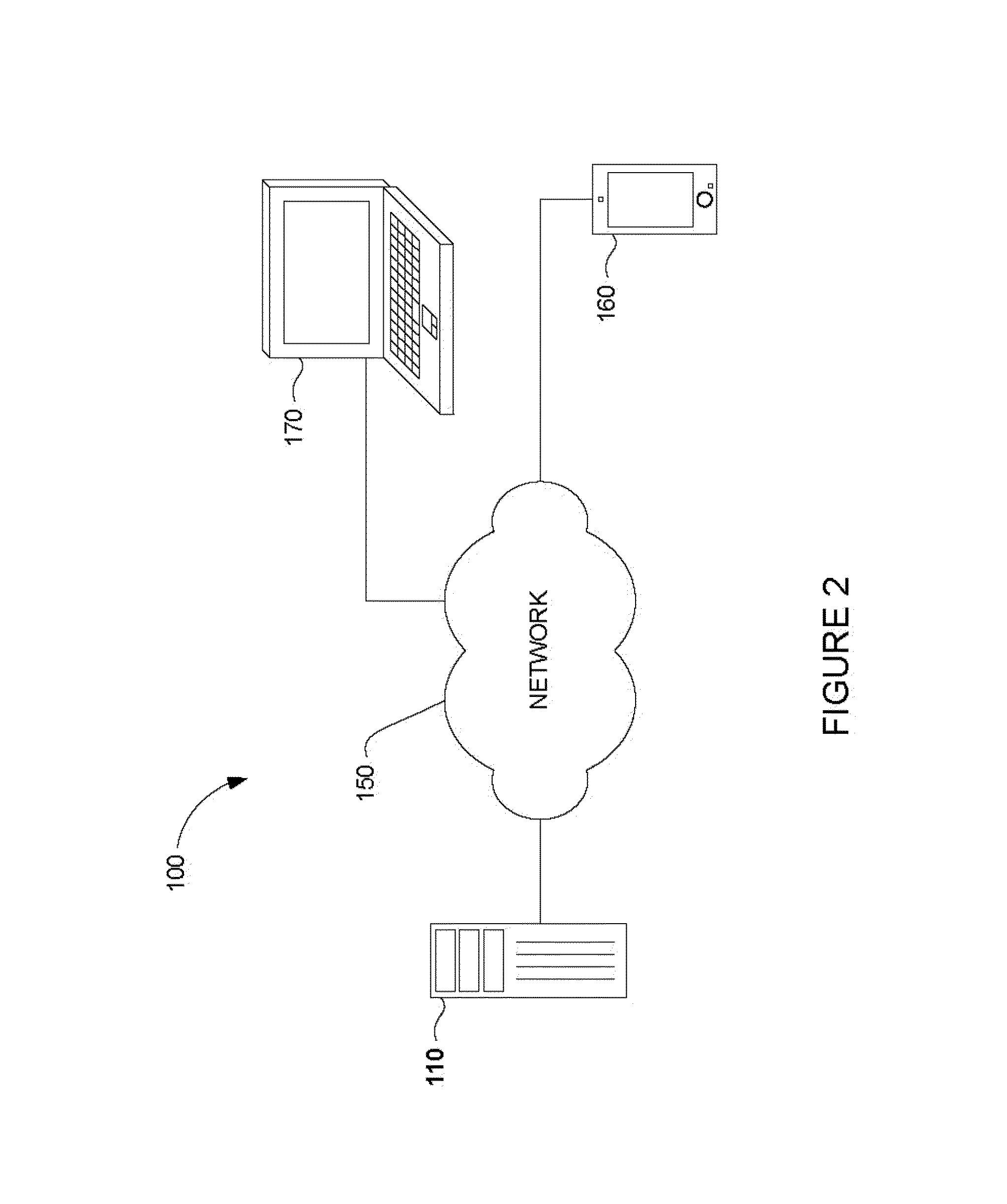Mobile device location determination using wi-fi signals
a mobile device and location determination technology, applied in the field of mobile device location determination using wifi signals, can solve the problems of reducing the quality of gps signals received from satellites, gps receivers may consume power at a much higher rate than other mobile device sensors, etc., and achieve the effect of reducing the power consumption of mobile devices and less power
- Summary
- Abstract
- Description
- Claims
- Application Information
AI Technical Summary
Benefits of technology
Problems solved by technology
Method used
Image
Examples
Embodiment Construction
[0014]Satellite navigation systems are commonly used to provide a mobile computing device with navigational guidance. For example, when operating a vehicle, GPS navigational guidance may inform a driver when to turn and provide distances between subsequent course changes. Compared to other mobile device sensors, GPS sensors provide the mobile device with the most reliable and precise information to navigate roadways. The location of the mobile device is updated approximately every second such that the GPS signal determines the precise location of the device and provides accurate guidance. According to one aspect, when the mobile device is moving at a slow speed, other mobile device sensors may be used to identify the device's location in order to avoid excessive power consumption associated with GPS navigational guidance. In some embodiments, Wi-Fi signal strength may be precise enough and may update frequently enough for reliable navigational guidance.
[0015]When moving at speeds be...
PUM
 Login to View More
Login to View More Abstract
Description
Claims
Application Information
 Login to View More
Login to View More - R&D
- Intellectual Property
- Life Sciences
- Materials
- Tech Scout
- Unparalleled Data Quality
- Higher Quality Content
- 60% Fewer Hallucinations
Browse by: Latest US Patents, China's latest patents, Technical Efficacy Thesaurus, Application Domain, Technology Topic, Popular Technical Reports.
© 2025 PatSnap. All rights reserved.Legal|Privacy policy|Modern Slavery Act Transparency Statement|Sitemap|About US| Contact US: help@patsnap.com



